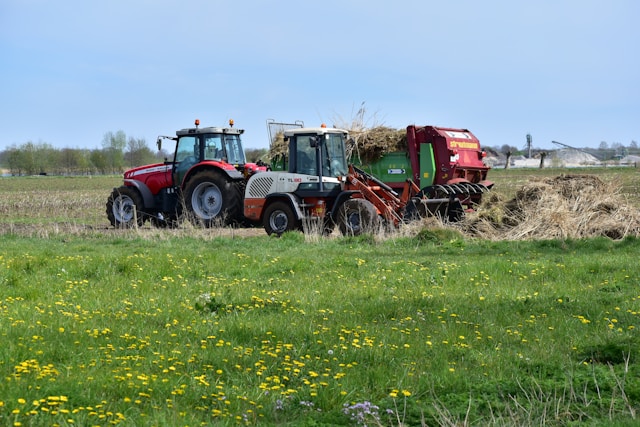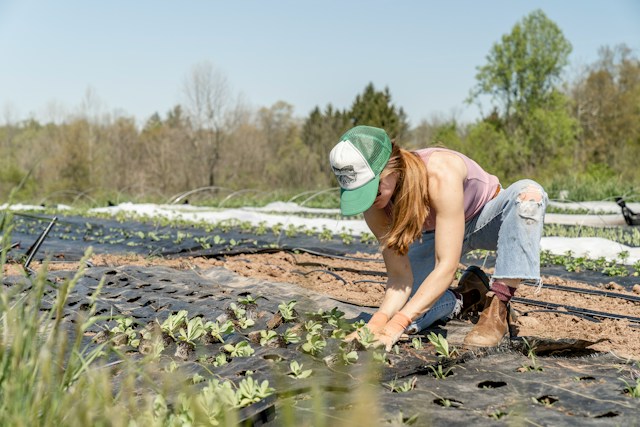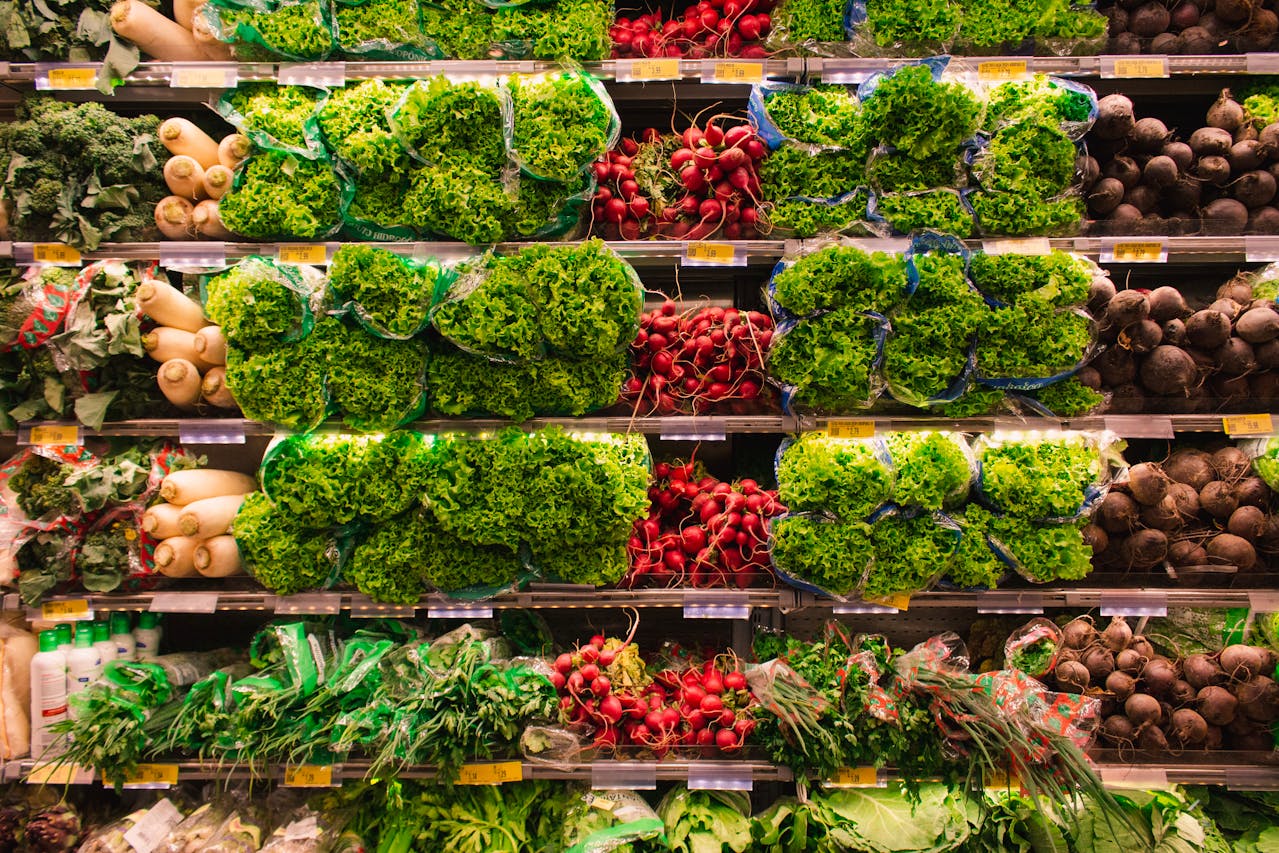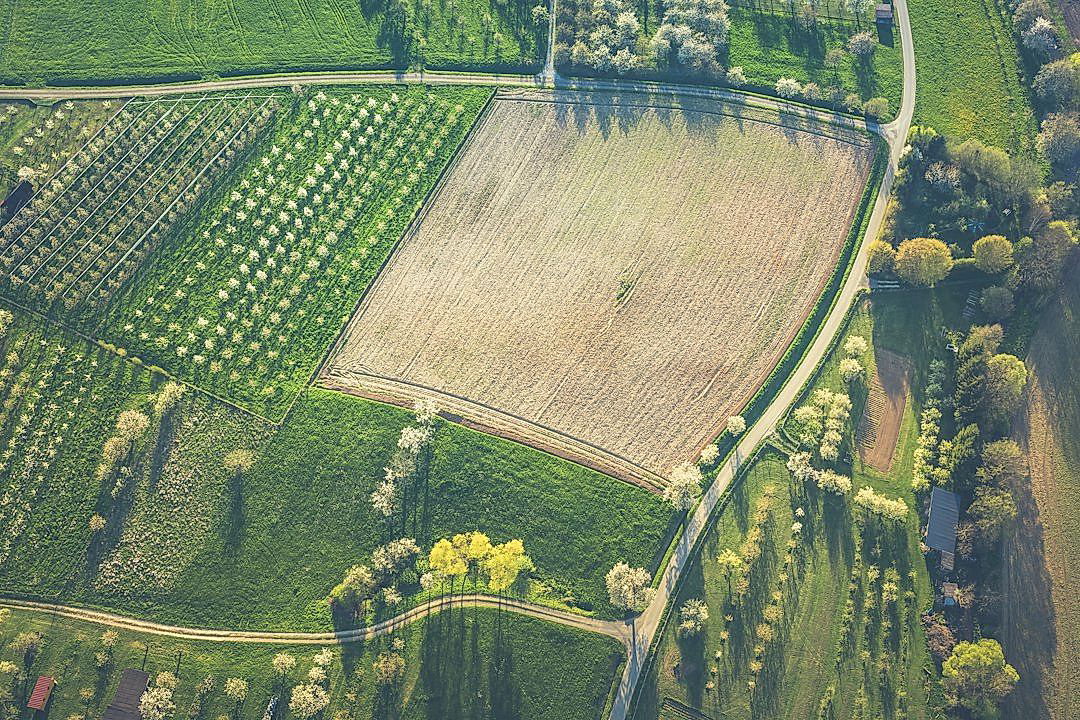In the dynamic world of farming, a greater appreciation for ecological principles is emerging as a critical component to enhance production and sustainability.
Biodiversity is a key attribute of nature, underlying the stability and resilience of ecosystems.
It offers multiple benefits to agriculture, encompassing improved crop health, yield, and quality.
Additionally, it contributes to pest and disease regulation, and soil health enhancement.
For produce farms, embracing biodiversity may unlock potential for sustainable growth and resilience.
This article explores how integrating high levels of biodiversity can create better yield outcomes while fostering a more sustainable agricultural model.
Contents
- Biodiversity Boosts For Produce Farms
- 1. Enhances Natural Pest and Disease Control
- 2. Improves Soil Health and Fertility
- 3. Promotes Beneficial Insect Populations
- 4. Enhances crop pollination
- 5. Helps in Waste Decomposing
- 6. Stabilizes local climate conditions
- 7. Creates Habitat For Wildlife
- 8. Improves resilience to climatic changes
- 9. Supports Crop Species Diversity
- 10. Boosts farm’s ecological sustainability
- The Bottom Line
Biodiversity Boosts For Produce Farms
1. Enhances Natural Pest and Disease Control
One of the critical ways that biodiversity boosts agricultural productivity in produce farms is through the enhancement of natural pest and disease control.
When a farm hosts a variety of plants, insects, and organisms, it creates a balanced ecosystem that reduces the dominance of particular pests.
These pests naturally get controlled by their predators, which are part of the same biodiversity.
For instance, farms that nurture bird habitats often get rewarded with natural bird predation against insects that could harm crops.
The inherent predator-prey relationships in a diverse ecosystem serve as a natural pesticide, thus reducing the reliance on chemical alternatives.
Moreover, diverse plant species can help control disease pathogens in the soil.
Some plants produce natural antimicrobial chemicals that suppress harmful microorganisms, thereby reducing the prevalence of soil-borne diseases.
By doing so, these plants naturally enhance the health and productivity of crops.
Additionally, the different plant species also attract a variety of pollinators, which offer the added benefit of cross-pollination.
Not only does this increase the yields, but it also boosts the plants’ immunity against certain diseases.
An added advantage of this natural pest and disease control is the reduction in the usage of synthetic pesticides and fungicides.
This subsequently lowers the production cost and minimizes the negative environmental impact associated with these chemicals.
The utilization of biodiversity in pest and disease control also contributes to a farm’s resilience against climate change.
With a wider variety of crops and organisms, a farm has a higher chance of thriving amidst changing weather patterns and emerging pests and diseases.
Therefore, by diversifying crops and nurturing natural habitats, farmers can enhance natural pest and disease control, boost crop yields, and safeguard their farms against future uncertainties.
The overarching goal is to establish a self-sustaining farming system that is efficient, resilient, and environmentally benign.
2. Improves Soil Health and Fertility
In the world of agriculture, the health and fertility of the soil is paramount.
Healthy soil is organically rich, and it plays a fundamental role in propagating plant growth.
Biodiverse agricultural systems are key to sustaining soil health and fertility as they create a synergistic environment where different organisms interact to produce necessary nutrients for the crops.
This is achieved because biodiversity helps in the breakdown of organic matter, recycling of nutrients, nitrogen fixation, and enhancing the soil structure.
Furthermore, it can mitigate soil degradation, preventing factors like erosion and nutrient runoff which can severely impact agricultural productivity.
Biodiversity introduces variety in the crops, which contributes to soil nutrient cycling and soil structure.
For instance, using cover crops in rotation augments organic matter inputs and thus improves soil fertility.
Similarly, the roots of leguminous plants are capable of ‘fixing’ nitrogen from the atmosphere, turning it into a form that plants can use.
This not only reduces the need for fertilizer application but also improves the soil’s health.
Earthworms, in a biodiverse system, drag organic materials deep into the soil, improving its structure and water holding capacity.
This, in turn, enhances the soil’s ability to store and supply nutrients to plants – a crucial aspect of soil fertility.
Soil microbes, such as bacteria and fungi, also play an essential role in enhancing nutrient cycling within the soil.
They decompose organic matter, turning it into nutrient-rich humus, which provides plants with essential nutrients and helps in promoting growth.
However, the importance of soil biodiversity extends beyond just the physical and chemical properties of the soil.
It forms a part of a complex ecological network where each component is interconnected.
The creatures that live within the soil, both visible and microscopic, contribute to ecosystem functioning and resilience.
Therefore, maintaining and augmenting biodiversity is a productive and ecological strategy for enhancing soil health and fertility on produce farms.
3. Promotes Beneficial Insect Populations
The promotion of beneficial insect populations plays a significant role in enhancing biodiversity on produce farms.
These insects, often referred to as beneficials, include predators, parasitoids, and pollinators, each having a different part to play in the agro-ecosystem.
Predators such as the ladybird beetle and the lacewing are very effective in controlling pest populations.
Their presence prevents overpopulation of harmful insects, thereby minimizing the application of chemical pesticides.
On the other hand, parasitoids such as certain wasp and fly species control pests by laying their eggs inside the bodies of their hosts, which then become food for their offspring.
This natural mechanism of control is not only effective but also sustainable and harmless to the environment.
Simultaneously, pollinators like bees and butterflies aid in the process of pollination, a critical step in the reproductive cycle of many crop plants.
Without these insects, crops would not bear fruits or seeds, leading to a significant decrease in yield and productivity.
The implementation of certain practices such as planting flower strips or maintaining semi-natural habitats on the farm can actively promote these beneficial insect populations.
Having a rich insect biodiversity on the farm can lead to more robust and resilient cropping systems.
Given the integral roles these insects play, it’s important for farmers to understand that not all insects are pests, and many can actually benefit their farming systems profoundly.
In essence, promoting beneficial insect populations aligns with the goal of fostering biodiversity on farms, making it a fundamental aspect of sustainable agricultural practices.
Ensuring the presence of such insects on the farm, therefore, not only aids in natural pest control but also contributes to an ecologically balanced farming approach.
By encouraging beneficial insect populations, farmers have a natural and sustainable means to boost crop health, productivity, and ultimately, overall biodiversity on the farm.
4. Enhances crop pollination
Among the crucial roles of biodiversity in agricultural systems, enhancing crop pollination is one of the paramount.
Diverse agroecosystems create habitats for beneficial insects, including pollinators such as bees and butterflies.
These insects play a vital role in the successful reproduction of many crops by facilitating the transfer of pollen from the male anthers to the female stigma.
This biological process is essential for the production of fruits, seeds, and vegetables.
Without efficient pollinators, crops such as almonds, apples, cherries, and many others would produce significantly lower yields.
Biodiverse farms encourage the survival and proliferation of these natural pollinators by providing them with shelter, food and breeding sites.
This not only boosts the population of beneficial insects but also increases farm productivity substantially.
Moreover, the variation of plant species in diverse agroecosystems creates a succession of flowering plants throughout the growing season, ensuring food supply for pollinators and a constant pollination process for the crops.
This sequential flowering system is critical for farms that grow multiple crops or have extended growing seasons.
Furthermore, biodiversity can protect pollinators from predators and parasites by offering them diverse habitats in which they can seek refuge.
Given the global decline of natural pollinators, promoting biodiversity on farms is a crucial step towards preserving these essential species and enhancing sustainable agriculture.
Biodiverse farms can also contribute to the health and diversity of local pollinator populations, which, in turn, can support the pollination of neighboring areas and strengthen the local ecosystem as a whole.
Besides insects, certain birds and bats also serve as pollinators, and diversified farming systems create habitats that attract these species as well.
Overall, biodiversity significantly enhances crop pollination, leading to higher yields and better-quality produce that directly impact the farm’s economic sustainability.
Encouraging biodiversity that fosters natural crop pollination systems aligns with the overarching goals of sustainable agriculture and ecological stewardship.
In the face of global climate change and pollinator loss, enhancing crop pollination through biodiversity has never been more relevant or necessary.
5. Helps in Waste Decomposing
In the realm of sustainable agriculture, biodiversity plays a pivotal role in accelerating waste decomposition. This may not be immediately apparent, but a closer look at the processes and players involved illuminates this fact.
Waste on a farm, be it plant residues or animal manure, has the potential to pose a significant environmental burden if not adequately managed. However, a biodiverse farm, characterized by a myriad of organisms from microorganisms to insects and birds, is equipped with a built-in, natural waste management system.
To understand this process, we need to consider the role of various organisms in the decay process. Microorganisms such as bacteria and fungi, earthworms and other invertebrates, and even birds and rodents all contribute to breaking down organic matter and returning the nutrients to the soil.
The richness of a farm’s soil microbiome, which is a clear indicators of biodiversity, is key here. Biodiversified farms generally have a greater abundance and diversity of these crucial decomposer organisms.
Decomposing organic matter is not just about getting rid of waste. It is a crucial process leading to nutrient cycling in the ecosystem. Nutrient cycling, in turn, directly impacts soil health and, consequently, crop productivity.
The process of waste decomposition in a biodiverse setting is in itself a wonderful symbiosis: as decomposer organisms break down waste, they not only rid the environment of potential hazards but also enhance the soil’s fertility by returning vital nutrients back to it.
This nutrient cycling process involves a complex network of organisms, each filling a specific role. Any disruption in this finely-tuned system has a domino effect on the rest of the ecosystem.
Through the promotion and implementation of biodiversified practices, the farm becomes an efficient, self-regulating system. Not only does the environment benefit, but biodiversity also contributes to reducing farming costs associated with waste management and disposal.
In many ways, the decomposition process is a testament to the power of diversity. It demonstrates how a variety of organisms working together can result in a cleaner and healthier environment, providing benefits beyond immediate waste removal.
In the sphere of sustainable agriculture therefore, biodiversity brings forth resonance to the adage ‘Waste not, want not’. Through its integral role in waste decomposition, it helps redistribute and reuse valuable nutrients that would otherwise go to waste.
Biodiversity’s role in waste decomposition also points towards its broader implications for climate change. A fast and efficient decomposition process prevents waste from piling up and producing harmful greenhouse gases.
Every discarded leaf, decomposed animal waste, and broken-down piece of organic matter contributes to the health of the farm and surrounding environment. This signifies the role that even ‘waste’ plays in the functioning of a biodiverse system.
In the grand scheme of things, understanding the role of biodiversity in waste decomposition gives us a clearer idea of how everything in nature is interconnected and dependent on each other for survival.
Ultimately, promoting biodiversity in farming not only aids in waste decomposition but also advances the farm’s resilience, productivity, and overall sustainability. Biodiversity, therefore, emerges as a key protagonist in the story of sustainable agriculture.
6. Stabilizes local climate conditions
One of the less obvious, yet significantly important benefits of biodiversity, especially on produce farms, is its capacity to stabilize local climate conditions.
This is because areas that exhibit a high level of biodiversity often have a more balanced and stable climate, especially when compared to areas that have been extensively modified or degraded.
Biodiversity, through the ecosystem it nurtures, helps in modulating temperature, maintaining precipitation cycles, and preserving soil moisture.
In the context of a produce farm, such stability can be crucial for the predictable growth and harvest of varied crops.
Farms rich in biodiversity can serve as a potent tool against the escalating challenge of climate change, by helping to balance local weather patterns and mitigate the effects of climate extremes.
The presence of diverse species of plants typically results in the higher absorption and storage of carbon dioxide, a greenhouse gas that contributes to global warming.
Moreover, having a wide range of plant species promotes a healthier soil structure, which in turn aids in controlling soil erosion caused by heavy rainfall or wind.
Biodiversity also contributes towards the regulation of water within the environment, with different species playing roles in terms of water absorption, storage, and transpiration.
Rather than leading to extreme weather patterns, like drought or flooding conditions, a biodiverse farm can help achieve moderation in moisture and temperature.
On a larger scale, biodiversity’s ability to stabilize local climate conditions can effectively reduce the need for artificial irrigation, increasing the farm’s sustainability and reducing cost.
Biodiversity offers a natural solution to maintaining steady climatic conditions, as opposed to relying heavily on artificial, often energy-intensive, climate control systems.
Promoting biodiversity on produce farms is not just about preserving nature; it’s about leveraging nature’s inherent mechanisms to create a more resilient and sustainable farming system.
From an agricultural perspective, the importance of consistent and predictable climate conditions cannot be truly understated, and biodiversity plays a vital role in providing this stability.
Investing in farm biodiversity is not just an ecological decision but a practically sound strategy for overall farm management.
Stabilizing local climate through biodiversity is ultimately a form of insurance against the unpredictable impacts of wider climate change.
7. Creates Habitat For Wildlife
The implementation of biodiversity conservation strategies on produce farms helps to create a welcoming environment for the flourishing of various wildlife species.
When farms operate with a high degree of biodiversity, they naturally provide a significant amount of food, shelter and other vital resources that an array of wildlife species depend on.
These farms serve as safe havens for animals to thrive and multiply, hence maintaining the balance in the ecosystem.
Animals such as birds, insects, and small mammals often find food and lodging within the diverse plant species and structures.
Biodiverse farms contribute to the conservation of wildlife by preserving their natural habitats and reducing the threats posed by human activities.
Wildlife species that inhabit these farms, in turn, contribute to the sustainability of the farming system.
For instance, predatory animals help in natural pest control by preying on crop pests, thereby decreasing the need for chemical pesticides.
Similarly, wildlife like birds and bees are crucial in pollination of crops, promoting their health and production quantity.
These mutual benefits create a synergy that enhances the overall agricultural productivity and ecosystem health.
Furthermore, the preservation of natural habitats on biodiverse farms contributes to the sustainability of migratory wildlife species.
Such habitats provide feeding and resting areas for migratory birds, butterflies, and other species that travel long distances, thereby contributing to global biodiversity conservation efforts.
But it’s not just about animals.
Microorganisms, often overlooked, also play a significant role in maintaining soil health and fertility.
These tiny creatures break down organic matter and recycle nutrients in the soil, thereby enriching the soil and promoting plant growth.
Therefore, it can be said that the creation of wildlife habitats through high levels of biodiversity on farms also supports the invisible yet essential microbial life that contributes to a productive and sustainable farming system.
Effective incorporation of biodiversity in farm planning and management is, therefore, a powerful tool in achieving sustainable agricultural practices that go beyond crop production, but also promote wildlife conservation and overall ecological balance.
8. Improves resilience to climatic changes
Biodiversity plays a crucial role in enhancing the resilience of produce farms against climatic changes.
The variety of species within an ecosystem can make it more robust and capable of withstanding different environmental stresses.
Farms with a diverse range of flora and fauna have better resilience in extreme weather conditions such as droughts, floods, and heatwaves.
Increased biodiversity allows farms to tap into a wider range of resources during periods of environmental stress.
A variety of plant species, for instance, can utilize different sources of water and nutrients, ensuring farm productivity even in challenging conditions.
Farms rich in biodiversity can bounce back more quickly after adverse weather events due to the existence of multiple species each adapted to thrive in various weather conditions.
Similarly, a higher diversity of crop varieties can lead to a greater genetic diversity which provides a wider array of traits that can cope with changing conditions.
The promotion of biodiversity can help moderate the effects of climate change on produce farms.
Through the presence of a variety of carbon-sequestering plants, a diverse farm can help mitigate global warming by absorbing and storing carbon dioxide from the atmosphere.
Moreover, measurable biodiversity, such as landscape diversity, can reduce the vulnerability of produce farms to climate change by creating physical barriers to extreme weather events.
Troughs, hills, and a diverse arrangement of crops can protect the farm from water erosion and wind damage.
A biodiverse farm also offers contingency in the face of crop failure; with a variety of crops available, the farm is less likely to experience total devastation in the event of a disease outbreak, pest invasion, or extreme weather event.
Biodiversity, therefore, is not just beneficial for its intrinsic value, but it’s a practical strategy for ensuring the resilience of produce farms in the face of unpredictable climatic changes.
While climate change poses significant threats to global food systems, and produce farms specifically, biodiversity can provide a buffer by delivering ecosystem services that help farms adapt and survive.
From retaining moisture in dry conditions through diverse soil communities, to facilitating crop recovery after pest outbreaks with a variety of beneficial insects, biodiversity equips produce farms to handle climatic threats more effectively.
9. Supports Crop Species Diversity
Biodiversity is fundamentally connected to crop species diversity on farms.
Farms that actively cultivate a variety of crops create a more balanced, robust ecosystem in their fields, compared to monoculture farms.
Crop species diversity encourages healthy insect and bird populations, which in turn reduce pests and aid in pollination.
Furthermore, a diverse crop species framework helps farms mitigate the risk of crop failure due to pests, disease and changing weather patterns.
This approach presents a higher degree of resilience against environmental changes and generally makes farms more adaptable.
Advocating for crop species diversity on the farm is a proactive approach in tackling some of the environmental challenges our global food system faces.
It also contributes positively to the local ecology and can attract beneficial insects and birds to the farm.
The practice of maintaining crop species diversity is a key biodiversity boosting strategy as it encourages beneficial interactions between different plant species, and between plants and animals.
These interactions lead to more vibrant and resilient ecosystems on the farm, which in turn results in more productive soil and healthier, more resilient crops.
When farmers focus on crop species diversity, they also enable the preservation of heirloom and indigenous crop species.
This has the potential to maintain and possibly increase the genetic diversity of our world’s food crops, which is crucial for future food security.
Given the numerous potential benefits, advocating for increasing crop species diversity is vital for any farmer or gardener interested in producing food in a sustainably and ecologically beneficial manner.
Besides, varying crop species enables farmers to maximise their land usage by planting different crops at different times of the year, hence improving productivity.
Including crop species diversity in farming practices is not just good for the environment but it can also be good for the bottom line.
The economic benefits of crop diversity come from improved yields, decreased inputs, and reduced risk of catastrophic loss.
In conclusion, supporting crop species diversity is a key way that biodiversity can boost the productivity and sustainability of a farm, while also enriching local ecosystems and contributing to a healthy planet.
10. Boosts farm’s ecological sustainability
The idea of ecological sustainability refers to the long-term maintenance of ecosystem functions that support human life and health.
Boosting a farm’s biodiversity can significantly contribute to its ecological sustainability.
A rich variety of plant and animal species within a farming ecosystem enhances its ability to adapt to changes and maintain productivity.
High levels of biodiversity mean that the ecosystem comprises multiple interdependent and complex relationships that strengthen its resilience against disturbances.
Instead of relying on single crop or animal species, biodiversity introduces several different species that have varying levels of resistance to pests, diseases, and climate changes.
This reduces the probability of massive crop failure or livestock loss, securing the farmer’s income and livelihood.
By promoting biodiversity on farms, crops are also able to mutually benefit from their surrounding environment.
This includes contributing to natural nutrient cycling and soil regeneration processes which enhance soil health and its capacity to retain water.
In the long term, these ecological benefits also translate to economic benefits as farmers save on inputs and interventions.
They do not have to rely heavily on external inputs like chemical fertilizers and pesticides, which can have adverse environmental implications and escalate production costs.
Ecological sustainability further affects how the farm is perceived by the surrounding community and market.
Farmers promoting biodiversity are often recognized for their best practices and contribute to the green economy by offering organic produce.
This creates a marketing advantage and opportunities for premium pricing.
It is important to mention that the journey towards ecological sustainability requires thoughtful planning and management.
Farmers need to understand the complexities of their ecosystem but also the possible trade-offs and challenges in ensuring biodiversity..
The Bottom Line
Collectively, the implementation of these actions has far-reaching benefits that sustain not only thriving agricultural landscapes but also healthy ecosystems.
From supporting crop species diversity to boosting a farm’s ecological sustainability, these strategies contribute to the conservation of our earth’s biodiversity.
By creating a haven for wildlife, maintaining soil health, fostering beneficial insect populations and enhancing natural pest control, we can mitigate climate change impacts and ensure the resilience of our environment.
Moreover, these practices lay the foundation for sustainable farming, focused not just on crop yield but fully integrating environmental health into a farm’s overall success.
This holistic, forward-thinking approach to agriculture is essential for our planet’s future well-being.




